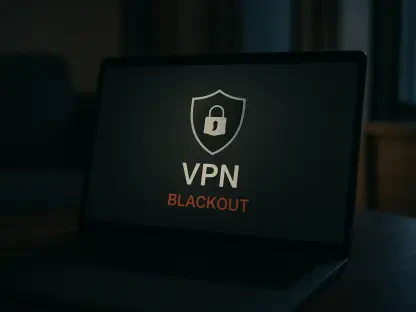The Linux Foundation’s open-source project L3AF has released version 2.1, promising to transform network management through the use of extended Berkeley Packet Filter (eBPF) technology. This update addresses critical challenges in maintaining performance during system updates, specifically in large-scale network infrastructures such as cloud and enterprise environments. With zero-downtime updates, enhanced observability, improved container support, and expanded network interface management, L3AF 2.1 is poised to make a significant impact. These advancements aim to streamline network operations and ensure robust performance, even during high-stake periods.
Harnessing the Power of eBPF Technology
At the core of L3AF is eBPF technology, which allows programs to run inside the Linux kernel without altering the kernel source code or loading kernel modules. This capability provides unparalleled flexibility and performance, making it an ideal solution for efficient and scalable network monitoring and management. L3AF leverages eBPF to address various network management scenarios, including traffic rate limiting, DDoS mitigation, traffic quality monitoring, and network observability. By seamlessly operating within the kernel, eBPF programs can perform functions directly impacted by the network’s real-time dynamics, offering insights that traditional methods may miss.
The relevance of L3AF extends across multiple industries. Initially developed for hyperscale e-commerce applications like those used by Walmart, by 2025, eBPF is expected to be integrated and supported across all modern cloud-native environments, making L3AF a crucial tool for multi-cloud and multi-platform network management solutions. These attributes ensure that organizations relying on complex, distributed systems can manage their networks efficiently, reducing downtime and enhancing security measures. The scalability of eBPF within L3AF facilitates its integration into various infrastructures, driving innovation and offering powerful tools for network administrators.
API-Driven Network Management
A standout feature of L3AF is its API-driven approach, which simplifies the deployment and scaling of network monitoring and control eBPF programs. This method eliminates the need for expensive networking hardware that can become performance bottlenecks, providing a unified and cost-effective solution for managing complex network environments. By managing eBPF programs exclusively through software, L3AF offers a streamlined approach to network management. This API-driven model ensures that network administrators can deploy and scale their monitoring and control solutions efficiently, without the constraints of traditional hardware-based systems.
The API-driven model enhances the ease of implementing network changes, driven by the flexibility and versatility of software management. Network administrators gain the ability to swiftly adapt to evolving requirements, ensuring operational reliability and quick response to emerging challenges. As companies increasingly depend on complex, geographically distributed networks, this agility becomes a critical asset. By allowing software to dictate network behaviors, L3AF makes it feasible to support intricate configurations without overhauling physical infrastructures, making deployment more efficient and less error-prone.
Effective Traffic Management and Security
L3AF’s capabilities in traffic management are exemplified by Walmart’s use of the technology to handle holiday sales traffic. This critical task for the retailer demonstrates L3AF’s effectiveness in managing high-traffic scenarios and defending against malicious traffic floods, such as DDoS attacks. The project offers full lifecycle management for DDoS mitigation, leveraging deep visibility into network components typically hidden outside the Linux kernel. This visibility and control allow complex functions to be performed efficiently within the traffic flow of e-commerce platforms, ensuring robust security and performance.
Moreover, L3AF’s advanced traffic management capabilities not only cater to e-commerce giants but also extend to various industries facing similar network demands. It provides invaluable tools for enterprises to maintain performance integrity while addressing security threats proactively. For organizations dealing with sensitive information or critical services, the assurance of uninterrupted operation is paramount. L3AF’s ability to balance high traffic loads with rigorous security protocols establishes it as a cornerstone for modern network solutions, enabling businesses to sustain operations even under duress.
Graceful Restart Functionality
One of the pivotal updates in version 2.1 is the introduction of graceful restart functionality. This feature addresses the need for updating and upgrading the control plane of eBPF programs without shutting down the l3afd daemon, which orchestrates and manages multiple eBPF programs. The new release ensures a seamless transition, wherein the new version of l3afd takes control before the existing instance shuts down. This functionality is crucial during high-demand periods where uninterrupted performance is imperative, providing a significant advantage for network administrators.
The graceful restart functionality signifies a leap forward in maintaining high availability and reliability across network operations. During critical peak times or essential updates, the ability to transition without service disruption preserves the user experience and operational efficiency. Network administrators can implement updates with confidence, ensuring systems remain responsive and meet performance expectations. This advancement underscores L3AF’s commitment to delivering robust, user-centric solutions that safeguard against potential downtime and performance degradation.
Enhanced Container Support
With the growing prominence of Kubernetes and containerized environments, L3AF 2.1 expands its container support, now available on Docker Hub. This integration simplifies the deployment and management of containerized workloads, supporting DevOps practices by allowing the use of L3AF images from Docker Hub. The use of Docker Hub ensures that the latest, most secure versions of L3AF can be deployed efficiently. This seamless incorporation into CI/CD (continuous integration/continuous deployment) pipelines facilitates the management of containerized environments, making L3AF a valuable tool for modern network management.
Integrating L3AF within containerized settings aligns with the industry’s shift towards microservices and scalable applications. As organizations embrace Kubernetes for orchestration, L3AF’s Docker Hub presence allows easy access to updated images, reinforcing security and performance through streamlined deployment. This synergy with CI/CD workflows ensures that network solutions evolve in tandem with application development, optimizing containerized workloads and improving overall system resilience. By supporting containers, L3AF enables faster, more reliable deployment cycles, crucial for agile development environments.
Advanced Network Observability with Kprobes
Successful network observability relies on utilizing standard interfaces for monitoring packets through the network. L3AF 2.1 includes support for Kprobes (kernel probes) and tracepoint hooks, enhancing existing observability systems by providing data directly from kernel eBPF programs. Kprobes are a kernel tracing capability that monitors and traces events in the operating system. By integrating these components, L3AF ensures a comprehensive end-to-end picture of network and application states, providing valuable insights for network administrators. The deep integration with eBPF programs allows granular visibility into network components, helping to diagnose issues, optimize performance, and improve overall network health.
This advanced network observability offered by L3AF addresses a critical need for real-time insights into the network’s operational state. Network administrators can leverage Kprobes and tracepoints to gather detailed metrics and performance data, facilitating proactive management and swift troubleshooting. The enhanced visibility into the inner workings of the network ensures precise monitoring and timely interventions, preventing potential disruptions and maintaining optimal performance levels. This level of observability is vital for organizations striving to uphold high standards of network reliability and efficiency.
Future Directions and Community Involvement
The Linux Foundation’s open-source project L3AF has rolled out version 2.1, marking a significant advancement in network management through the implementation of extended Berkeley Packet Filter (eBPF) technology. This latest update tackles key challenges such as maintaining performance during system updates, particularly vital in large-scale network infrastructures like those in cloud and enterprise environments. The introduction of zero-downtime updates, enhanced observability, improved support for containers, and expanded network interface management in L3AF 2.1 is positioned to have a profound impact. These improvements aim to simplify network operations, maintain robust performance, and mitigate disruptions even during peak periods. By focusing on these critical areas, L3AF 2.1 ensures that network infrastructures can operate efficiently and reliably, addressing the needs of modern, high-demand environments. This release underscores the ongoing commitment to advancing network technology and meeting the evolving requirements of complex systems.









